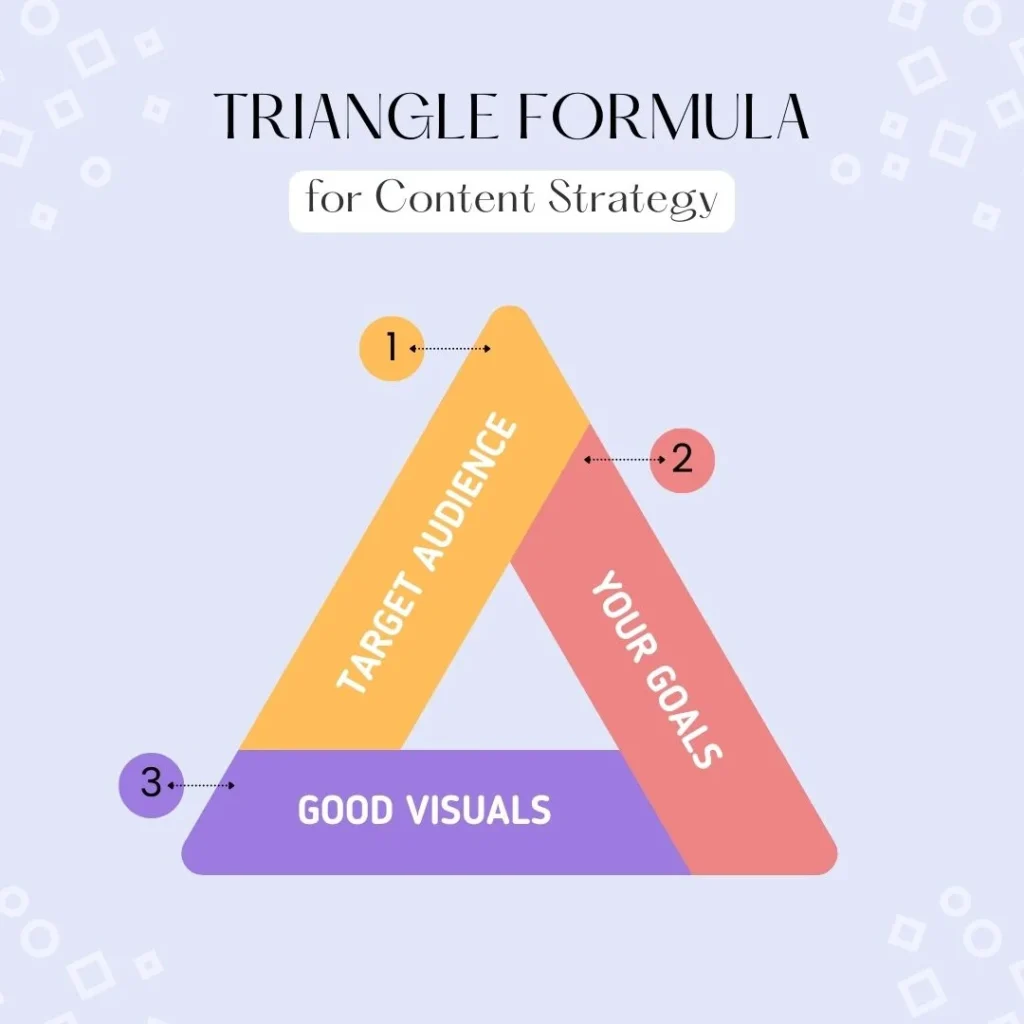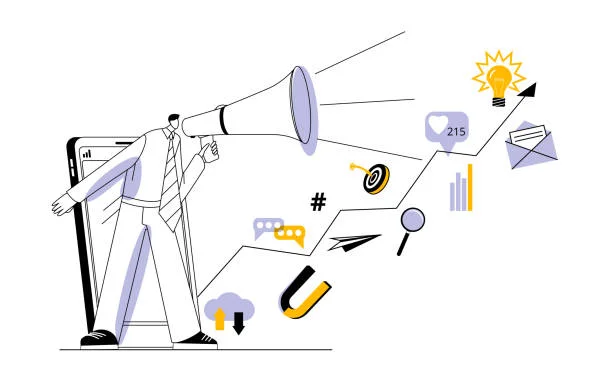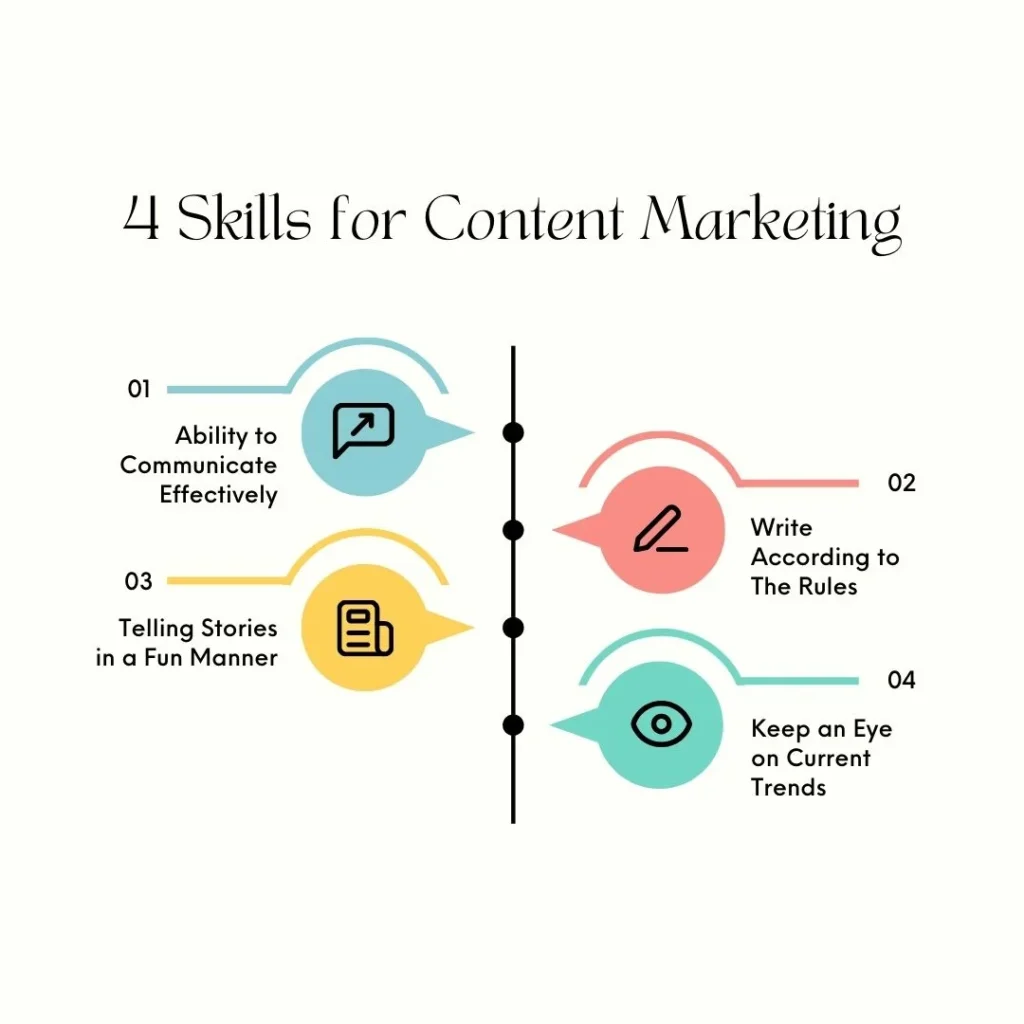In today’s fast-moving digital world, just being online isn’t enough. You need a smart, engaging way to connect with people, earn trust, and stay visible. That’s exactly what a content marketing strategy helps you do. It’s your plan for creating meaningful content that attracts the right audience and turns them into loyal customers.
Let’s walk through it in simple, clear language.
What Is Content Marketing?
Think of content marketing as storytelling with a purpose. Instead of pushing “Buy now!”, you share helpful, interesting, or inspiring content that your audience actually wants.
It can be:
- A blog post answering a question
- A social media update starting a conversation
- A simple video explaining something useful
- An infographic breaking down a complex idea
The goal is to give value first. When you do that consistently, people trust you. And when trust grows, sales follow naturally.
Why Content Marketing Matters Today

1. It Builds Trust
People avoid ads, but they appreciate useful information. When your content helps them solve a problem or learn something new, they start trusting you, and trust leads to conversions.
2. It Boosts Visibility
Google loves high-quality content. The more questions your content answers, the more chances you have to show up in searches.
3. It Creates Engagement
Content is how people interact with your brand. Comments, shares, likes, and replies strengthen the bond between you and your audience.
4. It Drives Results Long After Publishing
A good blog post or video can keep bringing traffic for months or years. It’s long-term marketing, not a one-week campaign.
5. It Supports Every Other Marketing Channel
You can reuse one piece of content everywhere: emails, social media, newsletters, ads, and presentations.
6. It Helps Generate Leads
When your content guides people through their decision-making journey, they move closer to becoming customers.
Short-Term vs. Long-Term Content Goals
Your content marketing strategy should cover both.
Short-Term Goals
These bring fast wins:
- Boosting brand awareness
- Increasing website traffic
- Getting email sign-ups through gated content
- Increasing engagement through social posts
Long-Term Goals
These build lasting value:
- Becoming a trusted authority
- Ranking higher on Google
- Building stronger customer relationships
- Improving retention through ongoing helpful content
How Content Supports Business Growth

Content marketing pushes multiple business objectives forward:
1. Increasing Revenue
Helpful content attracts leads and nurtures them until they buy.
2. Building Brand Identity
Your tone, values, and personality shine through your content.
3. Enhancing Customer Experience
How-to guides, FAQs, tutorials, and tips make the customer journey smoother.
4. Supporting New Product Launches
Content builds excitement and explains why your new product matters.
5. Strengthening SEO
More quality content = more Google visibility.
Also Read: 5 Low-Cost Ideas for Lasting Impressions
How Content Marketing Helps Your Business Grow
1. Driving Brand Awareness
If people don’t know your brand, they can’t buy from you. Content marketing helps you show up in front of the right people.
How Content Builds Brand Recognition
- Reaches Wider Audiences: Social platforms and Google open doors to new readers and customers.
- Creates a Unique Brand Voice: Your tone and message help people recognize you instantly.
- Provides Value Instead of Sales Pressure: Helpful content creates positive brand associations.
- Encourages Shares: Good content spreads naturally.
- Keeps You Top of Mind: Regular updates make your brand familiar and memorable.
Real Examples
- Coca-Cola’s “Share a Coke” created global buzz through personalized bottles and social sharing.
- Red Bull built a brand empire by publishing extreme sports content.
- Glossier used user-generated content to let customers market the brand themselves.
2. Building Authority and Trust
People buy from brands they trust. Content helps you prove your expertise.
How Your Content Builds Authority
- Sharing Expertise: Consistent, helpful content shows you know your field.
- In-Depth Insights: Longer guides, research, and tutorials show leadership.
- Thought Leadership: Sharing bold ideas positions you as a forward thinker.
- Consistency: Reliable publishing builds credibility over time.
How Educational Content Builds Trust
- It solves real problems.
- It proves your expertise naturally.
- It builds long-term relationships.
- It makes complex topics simple and transparent.
- It increases engagement because people return for more.
Example:
HubSpot built an entire brand by giving away free marketing education, earning trust before selling anything.
3. Enhancing Customer Engagement
Engagement is the heartbeat of modern marketing. Interactive content makes people an active part of your brand.
Types of Interactive Content That Work
- Quizzes and Polls: Fun, fast, personalized engagement.
- Surveys and Feedback Forms: Make customers feel heard.
- Calculators and Tools: Help users solve real problems instantly.
- Contests and Giveaways: Boost shares and attention.
- Interactive Infographics or Videos: Keep people interested longer.
4. Maximizing ROI (Return on Investment)
Content marketing is more cost-effective than paid ads and lasts longer.
Why Content Gives Better ROI
- Long-term value: Good content keeps working for you.
- Lower cost than ads: No pay-per-click fees.
- Brings organic traffic: SEO builds free visibility.
- Builds trust and conversion rates: People trust brands that educate them.
- Content can be reused: One article can become 10 different posts, videos, or emails.
Also Read: How to Write a Marketing Email That Converts in 2025?
How to Develop a Content Marketing Strategy
Here’s a simple step-by-step framework:
1. Define Your Goals
Do you want traffic? Leads? Sales? Visibility? Write clear and measurable goals.
2. Understand Your Audience
Create buyer personas. Know their pain points, interests, motivations, and content preferences.
3. Conduct a Content Audit
Check what content you already have:
- What performs well?
- What needs updating?
- What gaps exist?
4. Choose Your Content Types
Pick formats your audience prefers:
- Blog posts
- Videos
- Infographics
- Ebooks
- Podcasts
- Email content
5. Build a Content Calendar
Plan topics, publish dates, platforms, and responsible team members.
6. Optimize for SEO
- Use relevant keywords naturally.
- Write strong titles and meta descriptions.
- Add internal links.
- Use clear headings and clean URLs.
7. Promote Your Content
Share it everywhere:
- Social media
- Email newsletters
- Influencer collaborations
- Paid promotion if needed
8. Measure Performance
Track:
- Traffic
- Conversions
- Engagement
- Rankings
- Leads
Adjust your strategy based on results.
9. Repurpose Older Content
Turn blogs into videos. Turn videos into reels. Update older posts with fresh data.
10. Stay Flexible
Trends change fast; keep adapting.
Content Marketing Skills You Should Master

1. Clear Communication
Simple, clear messages always win.
2. Writing for SEO
Use structure, keywords, and readability to help Google understand your content.
3. Trend Awareness
Knowing what’s trending makes your content more relevant and shareable.
4. Storytelling
Stories make your message memorable and enjoyable.
Also Read: How Can a Virtual Assistant Simplify Local News Marketing?
Conclusion
A strong content marketing strategy helps you attract your ideal audience, earn trust, and guide people toward becoming loyal customers. In a digital world filled with noise, great content is how your brand stands out. If you want long-term growth, better visibility, and stronger customer relationships, content marketing is essential.
FAQs
1. What Are the Most Common Mistakes Businesses Make in Content Marketing?
Targeting the wrong audience, posting inconsistently, creating overly promotional content, ignoring SEO, and not tracking performance.
2. How Long Does It Take to See Results?
Usually 3–6 months, depending on consistency and SEO.
3. What’s the Difference Between Content Strategy and Content Marketing Strategy?
A content strategy covers creation and management.
A content marketing strategy focuses on attracting and converting customers.
4. How Can Small Businesses Benefit?
It’s cost-effective, improves SEO, builds trust, and increases brand visibility.
5. What Tools Help Create a Content Marketing Strategy?
Google Analytics, SEMrush, HubSpot, Canva, Trello, BuzzSumo, and keyword research tools.











